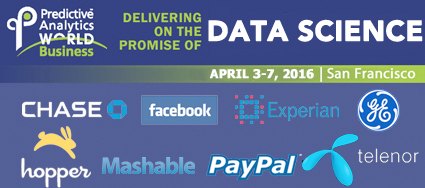The hotel and hospitality sector caters to millions of travelers every day, and each one of them checks in with their own set of expectations. Meeting those expectations is the key to getting people to return, and increasingly hotel and leisure operators are turning to advanced analytics solutions for clues about how to keep their customers happy.
Additionally, although their marketing departments would be loathe admit it, not all guests are equal in the eyes of hotel and leisure operators. Some will simply check in and check out with a minimum of fuss. Others will spend hundreds or thousands of dollars on fine dining, entertainments, sports activities and spa treatments. Identifying those customers with a higher overall lifetime value to a particular business is hugely important in today’s market, but a customer’s lifetime value might not be empirically obvious from observing their behavior during one visit.
For example, a high-rolling customer spending money like it is going out of fashion in the hotel casino may be on a “holiday of a lifetime” following retirement, and unlikely to behave in this way every day. Meanwhile a frugal business customer taking an economy room and spending very little on extra services may be a traveling businessman who will potentially return frequently if the hotel meets his needs, and therefore have a higher lifetime value. Big Data analytics can help make this distinction.

USE CODE PATIMES16 for 15% off Predictive Analytics World Conference pass.
A third overarching use of analytics in the hotel industry revolves around “yield management”. This is the process of ensuring that each room attracts the optimal price – taking into account troughs and peaks in demand throughout the year as well as other factors, such as weather and local events, which can influence the number (and type) of guests checking in.
Analytics has applications in all of these areas and although the hotel and hospitality sector has lagged behind others such as retail and manufacturing in adopting an analytics-first philosophy, that could be starting to change.
One pioneering example included US economy hotel chain Red Roof Inn who, during the record-setting winter of 2013/2014, realized the huge value of having a number of hotels close to major airports at a time when flight cancellation rate was around 3%. This meant around 90,000 passengers were being left stranded every day. The chain’s marketing and analytics team worked together to identify openly available public datasets on weather conditions and flight cancellations. Knowing that most of their customers would use web search on mobile devices to search for nearby accommodation, a targeted marketing campaign was launched, aimed at mobile device users in the geographical areas most likely to be affected. This led to a 10% increase in business in areas where the strategy was deployed.
Another US chain which has been recognized for their innovative use of analytics is Denihan Hospitality, which owns boutique hotels across the US including the James and Affinia Hotels brands. Denihan used IBM analytics technology to bring together transactional and customer data across its chains, and combine it with unstructured data such as customer feedback comments and reviews left on rating sites such as Tripadvisor. Menka Uttamchandani, the company’s vice president of business intelligence, said “Every company has massive amounts of data – it is what one does with that data – such as providing relevant dashboards, click through deep dive actionable reporting and analytical insight that can foster a competitive edge.”